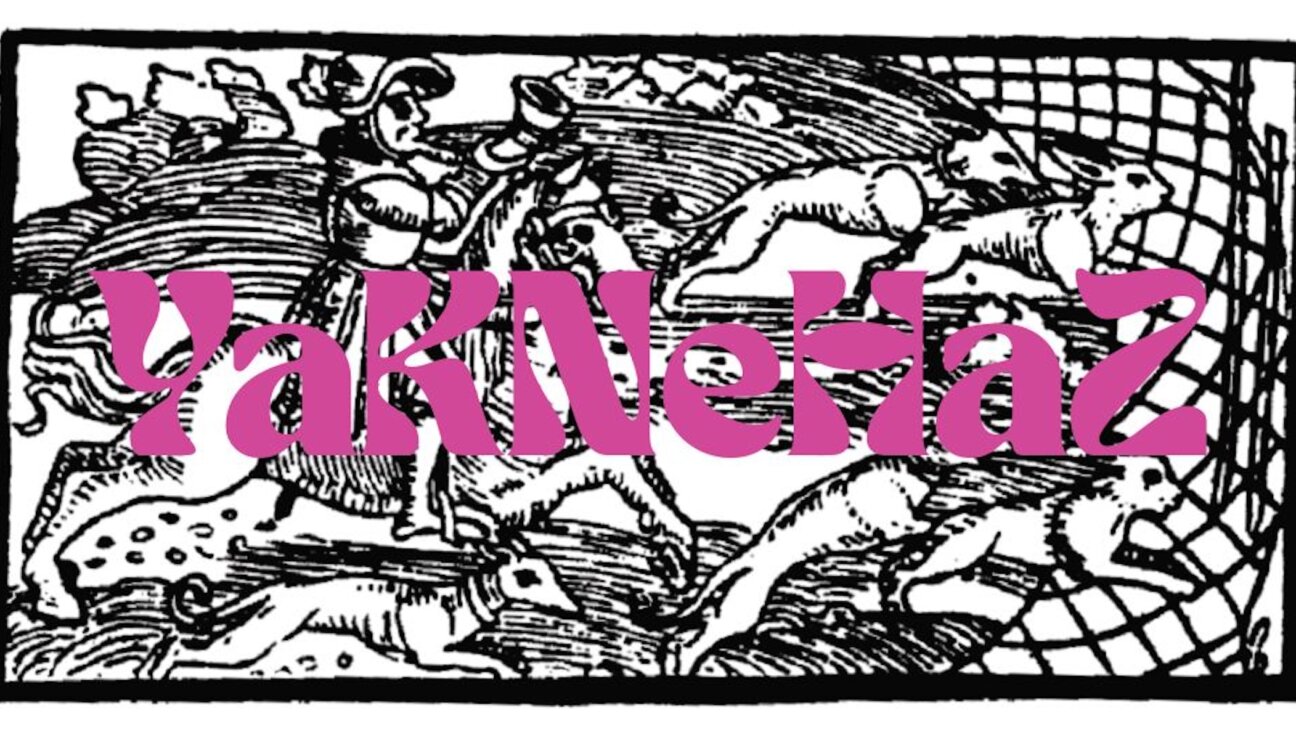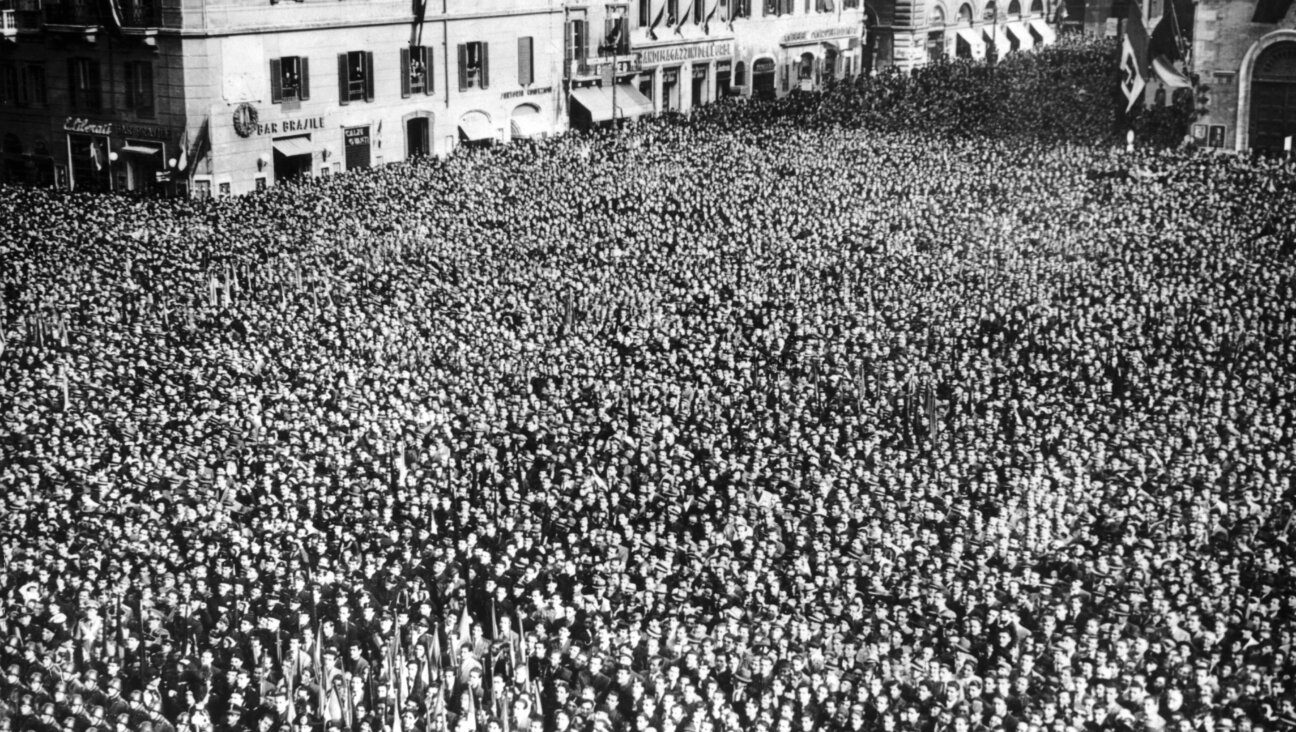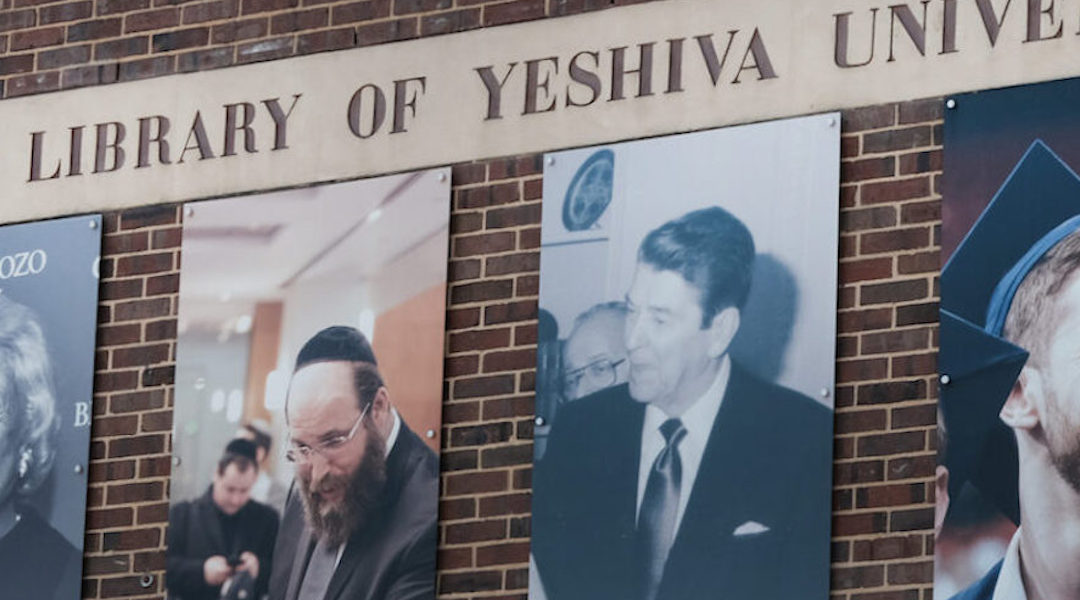Why It Pays To Factor Income Into College Admission Policies
FORWARD FORUM
A central tenet of the postwar American dream is that a bright young person from any walk of life has the opportunity to improve his or her prospects with a college degree. Veterans used the G.I. Bill to pursue their degrees in the late 1940s and 1950s, and their children followed them into the nation’s expanding public university system in the 1960s. For many Americans, however, access to higher education’s inner circle has remained limited by the barriers of race and class.
Today, almost two years since the Supreme Court’s decision in Grutter v. Bollinger affirmed that colleges and universities have a compelling interest in attaining a diverse student body, we recognize the heterogeneity of American higher education as one of the great strengths of our democratic society. This stands in stark contrast to admissions practices in the early to mid-20th century of many elite colleges and universities, which used quotas and other discriminatory policies in order to preserve a social order threatened by the sons and daughters of immigrants from southern and eastern Europe.
The anxiety and distress precipitated in the early 1920s by the appearance of Jewish students in the classrooms of the nation’s leading institutions was far out of proportion to their actual numbers, but even their moderate presence was disorienting and unsettling. At a time when most elite colleges and universities prized lineage and homogeneity, educators feared that the matriculation of Jewish students would alienate the Protestant elites who were the philanthropic underpinning of alma mater.
Just as the passage of congressional legislation in 1921 and 1924 restricting immigration from southern and eastern Europe accurately captured the xenophobia and nativism of American society, so, too, did the new admission policies introduced by the nation’s leading institutions that raised subjective qualities such as “character” and ”leadership” to the same level as more objective measures of academic achievement. Seemingly innocuous requests for campus interviews and photographs, as well as information about parental birthplaces and religious affiliations, ensured that colleges and universities would have a variety of means to limit access.
Today’s barriers to entry are vastly different. Although explicit policies to keep certain people out on the basis of race, gender and religion have been eliminated, more organic barriers — such as poor academic and social preparedness, information deficits and outright financial hardship — are limiting college opportunities for students from socioeconomically disadvantaged backgrounds. This group includes more white students than minority students, even though minorities are disproportionately represented. These barriers are just as troublesome in their effects and in many ways more difficult to overcome than the explicit exclusion of individuals with unwanted characteristics.
College enrollment rates have increased for all racial, ethnic and socioeconomic groups over the past 30 years, but there is not anything like equal access to college today. Our research demonstrates that the odds of achieving SAT scores that will make an individual a competitive candidate for admission to a selective college or university are roughly six times higher for students from the top income quartile than for students from the bottom income quartile, and roughly seven times higher for students whose parents have attended college than for those who would be first-generation college-goers. Given these odds, which reflect the substantial obstacles confronting children from poor families, it may not be surprising to learn that only 11% of the students at a representative group of 19 selective public and private institutions come from the bottom income quartile, and that only about 6% are first-generation college-goers.
But if it is not surprising, it is disappointing on two levels. First, these percentages are far below the proportion of these groups in the national population. Second, although these highly selective institutions are truly “need-blind” in their admissions policies — meaning that a student’s financial need is not weighed in the process — they provide significant admission preferences for alumni children or “legacies” (19 percentage points), underrepresented minorities (28 percentage points) and athletes (30 percentage points). There are radically different reasons for awarding these admission preferences, and some justifications are much more persuasive than others. The question before us is whether the current set of preferences remains the best way to allocate scarce, life-changing opportunities.
Minority preferences serve several basic educational and societal goals. Colleges and universities have an interest in the educational value that diversity brings, and democratic principles demand an educated citizenry reflective of our multicultural society. Race continues to matter a great deal in America and that reality needs to be acknowledged if we are to address the racial stigmas that profoundly disadvantage minority students. It is impossible to know whether the objectives of race-sensitive admissions will be achieved within the “expected” 25-year limit Justice Sandra Day O’Connor set out in the Grutter v. Bollinger ruling. But recent trends are not encouraging; additional efforts at both the collegiate and pre-collegiate levels are needed.
While minority preferences serve societal goals, legacy preferences serve individual institutional goals with respect to maintaining strong alumni relationships and raising the discretionary funds that improve the environment for all students on campus. The preferences afforded recruited athletes, on the other hand, serve much narrower purposes.
There is strong empirical evidence that the recruitment of intercollegiate athletes — even at the level of the National Collegiate Athletic Association’s Division III, where athletic scholarships are not offered — conflicts with core academic values. Athletic preferences present fundamental challenges to institutional goals, resource allocations and the careful crafting of an incoming class. The fact that recruited athletes underperform academically, whether they are participating in their sport or not, raises important questions about continuing this form of preference.
By contrast, students who make it into the credible applicant pool from the lowest income quartile and those who would be the first in their families to attend college must clear high hurdles to do so — yet they are treated exactly the same as applicants from more privileged circumstances with the same test scores, secondary school grades, race and other characteristics. Research from these 19 selective institutions also demonstrates that when qualified applicants from poor families are admitted, they enroll, perform academically, graduate and enjoy later life experiences that mirror those of their more privileged classmates.
“Need-blind” admission, which has been the cornerstone of higher education’s commitment to fairness and opportunity since its introduction 50 years ago, is being dutifully applied, and this is certainly good news. But are the claims of equity really being met through a need-blind approach in a society in which students are so stratified by socioeconomic status in their pre-college years? Surely, qualified students from disadvantaged backgrounds who have “bucked the odds” by making it into the credible applicant pool deserve a “thumb on the scale” equivalent to, say, that offered the highly qualified children of alumni, whose parentage has given them a special place in the competition.
Fairness, efficiency and the nation’s competitive position in the world require taking actions that contribute to economic opportunity and social mobility. The class and racial divide in higher education, and in society at large, will narrow only when families, communities, schools and government use their collective social and financial capital to nurture, inspire and prepare young people to compete equitably in the marketplace. Colleges and universities have an important role to play in this effort and are in perhaps the best position to make an immediate impact on the lives of the current generation of disadvantaged young adults.
The Forward is free to read, but it isn’t free to produce

I hope you appreciated this article. Before you go, I’d like to ask you to please support the Forward.
At a time when other newsrooms are closing or cutting back, the Forward has removed its paywall and invested additional resources to report on the ground from Israel and around the U.S. on the impact of the war, rising antisemitism and polarized discourse.
Readers like you make it all possible. We’ve started our Passover Fundraising Drive, and we need 1,800 readers like you to step up to support the Forward by April 21. Members of the Forward board are even matching the first 1,000 gifts, up to $70,000.
This is a great time to support independent Jewish journalism, because every dollar goes twice as far.
— Rachel Fishman Feddersen, Publisher and CEO
2X match on all Passover gifts!
Most Popular
- 1

News A Jewish Republican and Muslim Democrat are suddenly in a tight race for a special seat in Congress
- 2

Fast Forward The NCAA men’s Final Four has 3 Jewish coaches
- 3

Fast Forward Cory Booker proclaims, ‘Hineni’ — I am here — 19 hours into anti-Trump Senate speech
- 4

Film & TV What Gal Gadot has said about the Israeli-Palestinian conflict
In Case You Missed It
-

Fast Forward Passover haggadahs have long included pictures of rabbit hunts. This year shows us why.
-

Film & TV In 1913 Vienna, Freud meets Hitler — and the patient of his nightmares
-

Theater The ‘Glengarry Glen Ross’ revival has us wondering — where are all the Jewish Shelley Levenes?
-

Books From an Italian Holocaust survivor, a Kafkaesque nightmare of imprisonment under fascism
-
Shop the Forward Store
100% of profits support our journalism
Republish This Story
Please read before republishing
We’re happy to make this story available to republish for free, unless it originated with JTA, Haaretz or another publication (as indicated on the article) and as long as you follow our guidelines.
You must comply with the following:
- Credit the Forward
- Retain our pixel
- Preserve our canonical link in Google search
- Add a noindex tag in Google search
See our full guidelines for more information, and this guide for detail about canonical URLs.
To republish, copy the HTML by clicking on the yellow button to the right; it includes our tracking pixel, all paragraph styles and hyperlinks, the author byline and credit to the Forward. It does not include images; to avoid copyright violations, you must add them manually, following our guidelines. Please email us at [email protected], subject line “republish,” with any questions or to let us know what stories you’re picking up.















